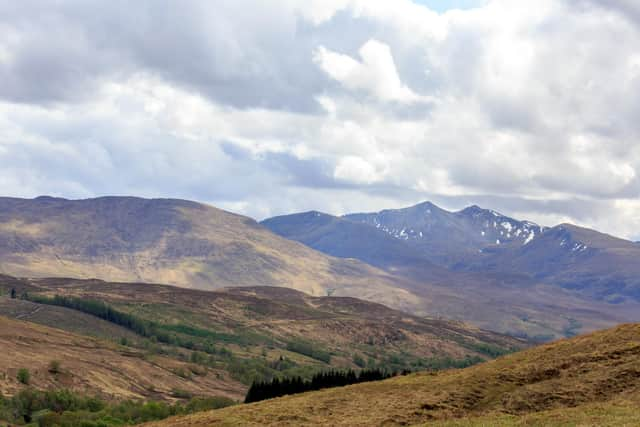Carbon credits: What are carbon credits? How are carbon credits being used in Scotland?
What are carbon credits?
A carbon credit is a token that someone can use to pay someone else to theoretically “offset carbon”.
They represent the avoidance or removal of greenhouse gas emissions, measured in tonnes of carbon dioxide equivalent.


What is carbon offsetting?
Advertisement
Hide AdAdvertisement
Hide AdCarbon offsetting is absorbing carbon from the atmosphere to balance out the harmful carbon emissions generated by an organisation.
This is accomplished through the process of carbon sequestration, and this can be achieved through the creation of vegetation such as trees or healthy peatlands, which take in carbon from the air and lock it away as part of their natural lifecycles.
It is one of the biggest reasons behind the rush for Scottish land for tree planting and other carbon sequestration practices such as peatland restoration. With its large rural land area, lightly regulated land market and lucrative government subsidies for woodland and peatland projects, Scotland is attractive to those buying into the carbon credit market.
How are carbon credits used?
While some businesses and organisations are doing what they can to reduce their volume of emissions at the source, for many there will always be some unavoidable pollution they generate.
The two options are to either personally offset their carbon emissions themselves, or pay someone else to do it for them. This is where carbon credits come in.
What is an example of carbon credits?
Let’s say the owners of a shoe manufacturer in Scotland want to offset their emissions so they can say to their shareholders they are a responsible company. They can either buy land to plant trees to offset their own carbon, or buy carbon credits off someone else who has the place to do it.
So, say the site emits 1,000 tonnes of carbon a year, they can then buy a carbon credit from a landowner or manager who is sequestering 1,000 tonnes a year through tree planting. At this point, the shoe manufacturer can then claim it’s net zero.
But it’s not all that simple.
The scheme of carbon credits has proved to be highly controversial.
What do the critics say?
Advertisement
Hide AdAdvertisement
Hide AdThere are concerns companies looking to offset carbon are tempted to just pay someone else as a way of “dealing” with their emissions instead of cutting them down at the source themselves.
On an international scale, offsets would also require an enormous amount of land to tackle just a small part of global emissions. Oxfam has previously claimed trees would need to be planted across land five times the size of India if the world is to meet net-zero emissions by 2050 (the Paris Agreement goal) through tree planting alone.
Carbon credits have been branded as a “false solution” to the climate crisis by green campaigners. They have insisted some carbon sequestration projects will take decades to capture the amount of emissions required to offset their carbon. Because emissions are cumulative, pollution being released into the atmosphere while the woodland or peatland project is developing will still contribute to global warming.
While capturing carbon through planting trees is one of the most popular methods in the carbon credit system, if the trees are damaged in bad weather or if they die, then the carbon they hold will be released back into the atmosphere. It’s not the same as capturing carbon underground.
Comments
Want to join the conversation? Please or to comment on this article.